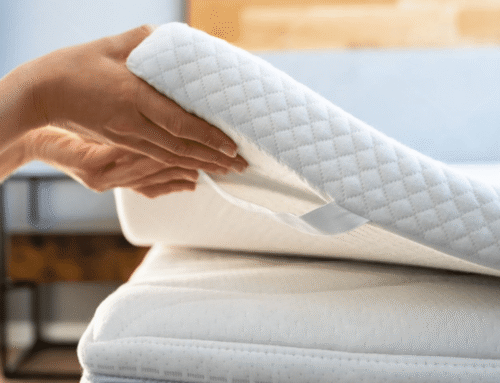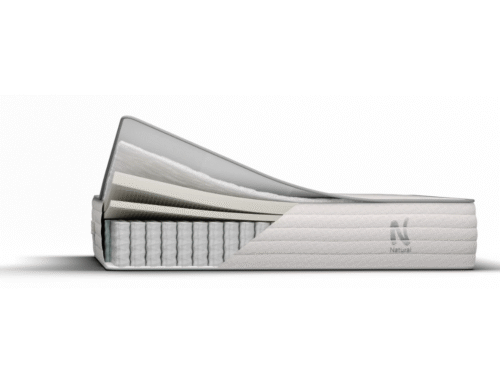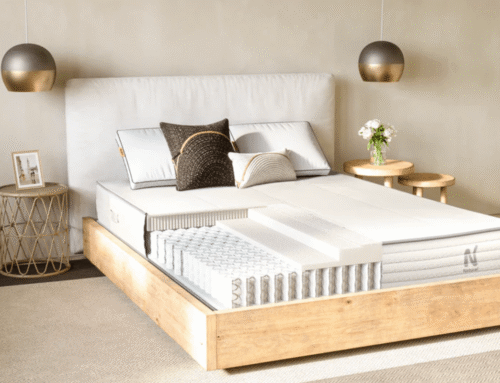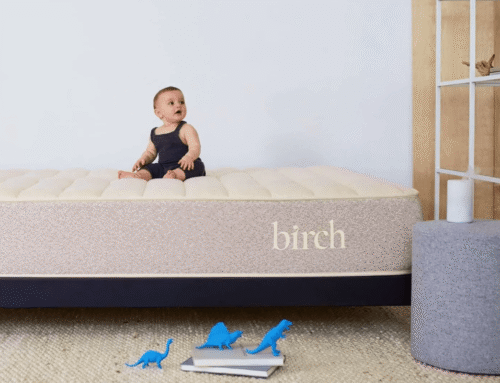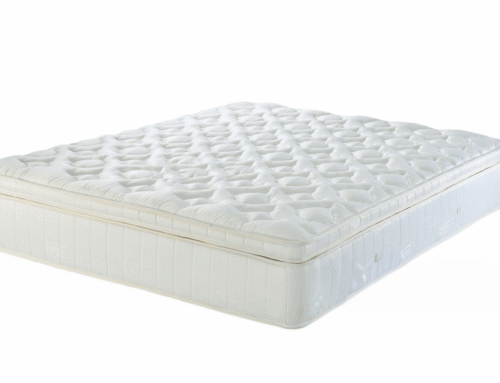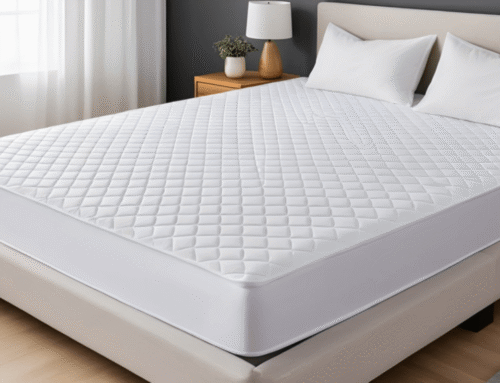Buying a queen mattress isn’t just about considering its size, but thickness matters too. The height of your mattress can affect how comfortable and supportive it feels. It can also affect how long the mattress lasts and how well you sleep through the night. Queen mattresses usually come in thicknesses between 8 to 14 inches, with some higher-end ones being even thicker.
A thinner mattress might feel firmer and look more modern, while a thicker one adds softness and extra cushioning. Both have their pros and cons, depending on what you need. The right mattress thickness depends on your sleeping style, weight, and bedroom setup. Before choosing thickness, it’s important to understand how wide and how long a queen bed is. A queen bed is 80 inches long and 60 inches wide and provides ample space.
We will explain why thickness is important and how it affects your sleep. Whether you like a firm bed or something soft and cushy, knowing the right thickness will help you make a better choice. A well-chosen thickness can also enhance your bed’s overall comfort and support.
Key Takeaways
- Queen mattresses range from 8 to 14 inches thick, so both comfort and support vary.
- Thinner options (6-8 inches) suit lightweight sleepers or temporary setups, but they may not provide enough support for regular use.
- Standard models (8-12 inches) offer a balance of comfort and support, so they fit most sleepers and bed frames.
- Thicker designs (12-16+ inches) create a plush feel, and they add extra cushioning for side sleepers, though they may require deep-pocket sheets.
- The right thickness depends on sleep position, body weight, and bedroom setup, so it affects overall sleep quality.
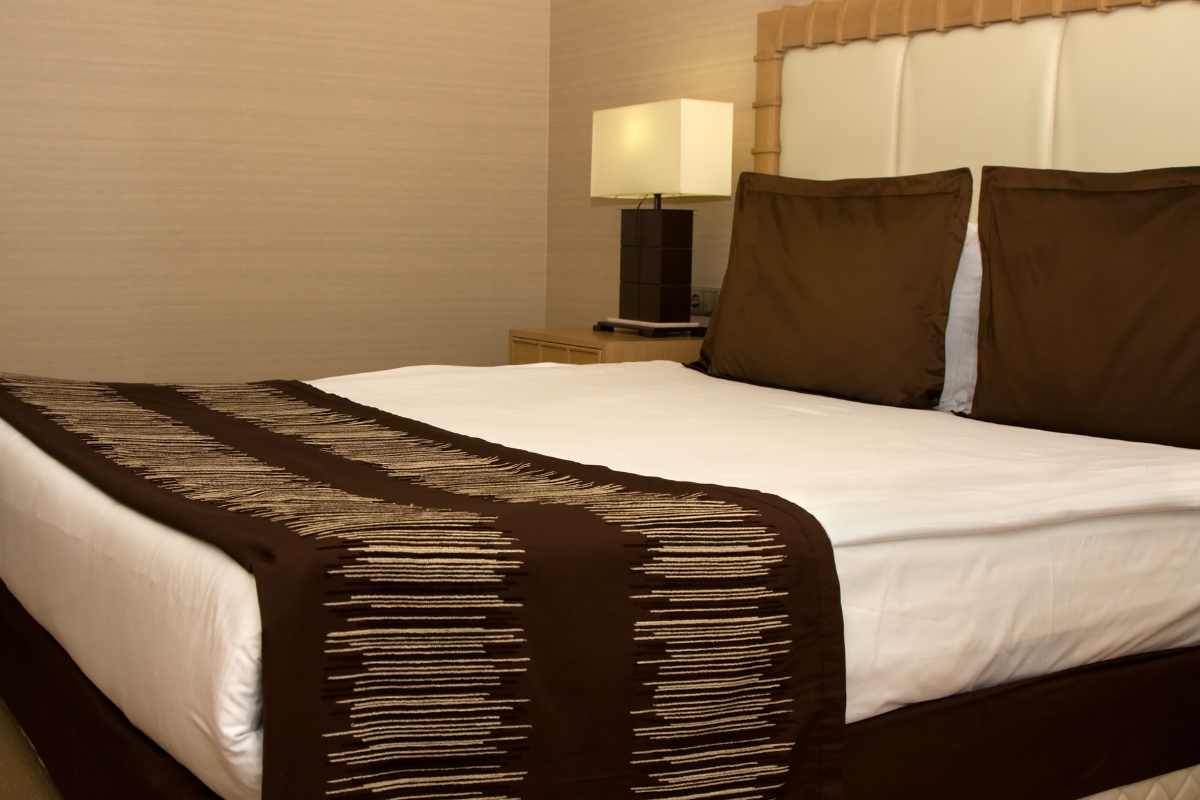
Understanding Mattress Thickness for Queen Beds
Queen mattresses come in different thicknesses to match various sleeping needs.
Thin mattresses, less than 8 inches thick, work well for bunk beds or temporary setups. However, they may not provide enough support for everyday sleep. Standard mattresses, about 8 to 12 inches thick, tend to work best for most sleepers. They’re comfortable, supportive, and fit most bed frames. This makes them a practical choice for many people without the hassle of compatibility issues. Thicker mattresses, 12 to 16 inches or more, feel soft and luxurious. They’re great for side sleepers who need extra cushioning for their shoulders and hips or anyone who prefers a plush bed. Just keep in mind they can be heavy and need special deep-pocket sheets.
A mattress’s thickness comes from its layers, comfort, transition, and support. Each layer adds to how the mattress feels and supports your body. Choosing the right thickness can help you sleep better and wake up feeling more rested.
Why Mattress Thickness Matters
The thickness of a mattress can change how comfortable it feels. Thicker mattresses usually have more padding on top, which makes them feel softer and cozier. If you like sinking into your bed, this might be perfect. But if you prefer a firmer feel, a thinner option could be better for you.
A thicker mattress often provides better support for your back. It helps keep your spine straight and can prevent discomfort, especially if you have back pain. Thinner mattresses might not hold up as well over time, especially for people who need more support while they sleep. Thicker mattresses also tend to last longer because they’re made with stronger materials. They can handle more wear and tear, while thinner mattresses might wear out faster, depending on how they’re made.
Getting in and out of bed is another thing to think about. Thin mattresses are easier for kids or shorter people to climb onto. On the other hand, thick ones might feel higher off the ground, which could be less convenient for some.
Key Thickness Ranges for Queen Mattresses
When considering the right mattress thickness, it’s important to first understand what you’re working with in terms of size. What size is a queen mattress? How big is a queen size bed? And what are the dimensions of a queen size bed? A queen mattress typically measures 60 inches wide by 80 inches long, offering ample space for one or two sleepers.
Now, let’s explore the different thickness options:
- Thin Mattresses (6-8 inches): Great for lightweight sleepers or temporary setups like a guest room. They’re easy to handle and save space but might not provide enough support if you’re on the heavier side.
- Standard Mattresses (8-12 inches): This range is the sweet spot for most people. You get a good mix of comfort and support, and they work well with nearly any type of bed frame.
- Luxury Mattresses (12-16+ inches): These are all about plush comfort, especially if you deal with joint pain or sleep on your side. They often include layers of premium materials like memory foam, latex, or pillow tops for added pressure relief.
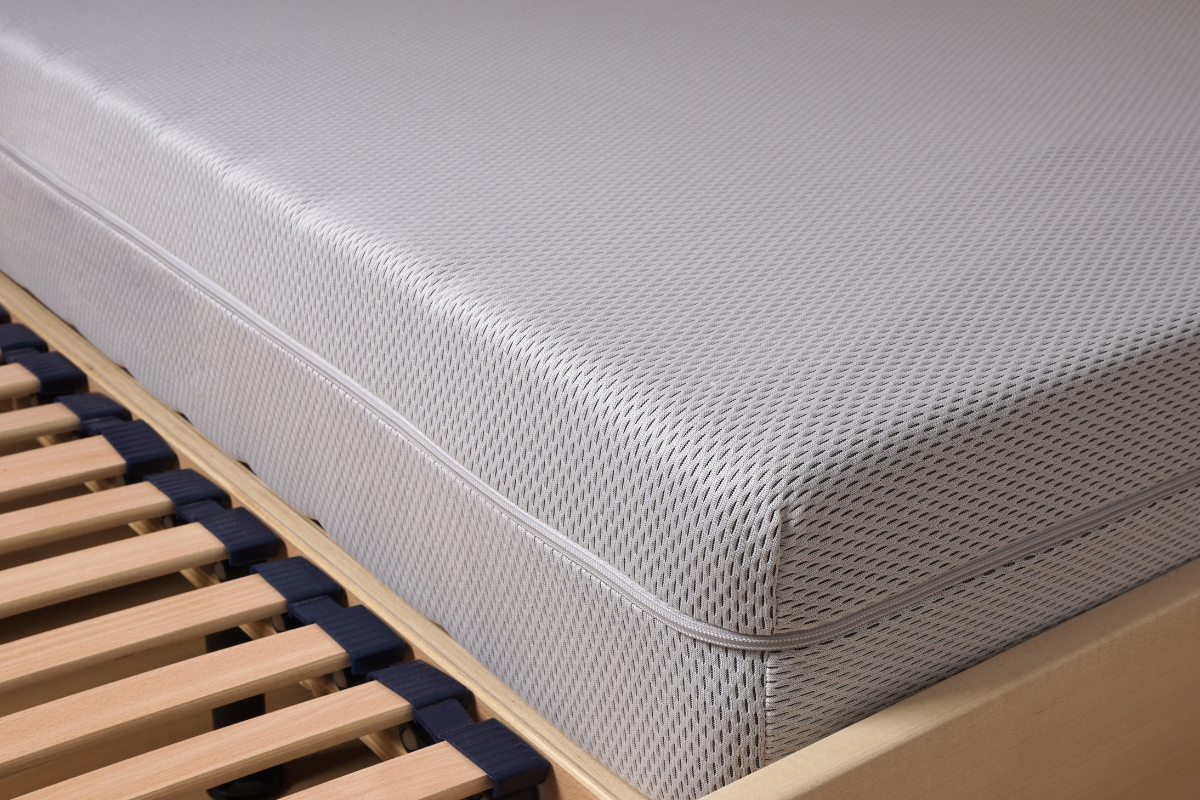
Factors That Determine the Ideal Thickness
Mattress thickness depends on your sleep position. Side sleepers often prefer a 12-14 inch mattress for pressure relief. Back sleepers do well with a 10-12 inch mattress for spine alignment, while stomach sleepers need a thinner 8-10 inch mattress for firmer support.
Your body weight affects mattress thickness. Lighter sleepers (under 130 lbs) prefer an 8-10 inch mattress, while those between 130-230 lbs find a 10-12 inch mattress ideal. Heavier sleepers (over 230 lbs) need a thicker mattress (12 inches or more) for better stability.
The height of your bed frame matters too. Low-profile frames often need thicker mattresses for proper comfort and height. Taller frames pair better with thinner mattresses, creating a more balanced look in the room. Consider both when choosing the right thickness.
Room aesthetics should also be considered. Thicker mattresses can add a luxurious feel, but they may overwhelm smaller rooms. A thinner mattress might be better for smaller spaces to keep everything proportionate and comfortable.
Construction and Thickness
The thickness of a queen mattress is made up of several layers, each designed for a specific purpose. But how deep is a queen mattress? The depth can vary depending on the materials and construction, but generally, it’s composed of layers that work together to provide comfort and support. Under that, you’ll find the transition layer, typically 1 to 4 inches thick. It’s the bridge between the comfort and support layers to help distribute your body weight evenly and enhance contouring to your shape. This layer plays an important role in creating a balanced feel.
At the core, the support layer is usually between 4 to 8 inches and provides the mattress’s backbone. It’s often made of high-density foam or innerspring coils and offers the support needed for spinal alignment and preventing any sagging over time. This is where durability comes from.
Luxury mattresses may feature additional layers like pillow tops or cooling gels, which can increase the mattress’s overall height. These extra touches help create a more comfortable and personalized sleep experience to keep you cooler or add a plush finish.
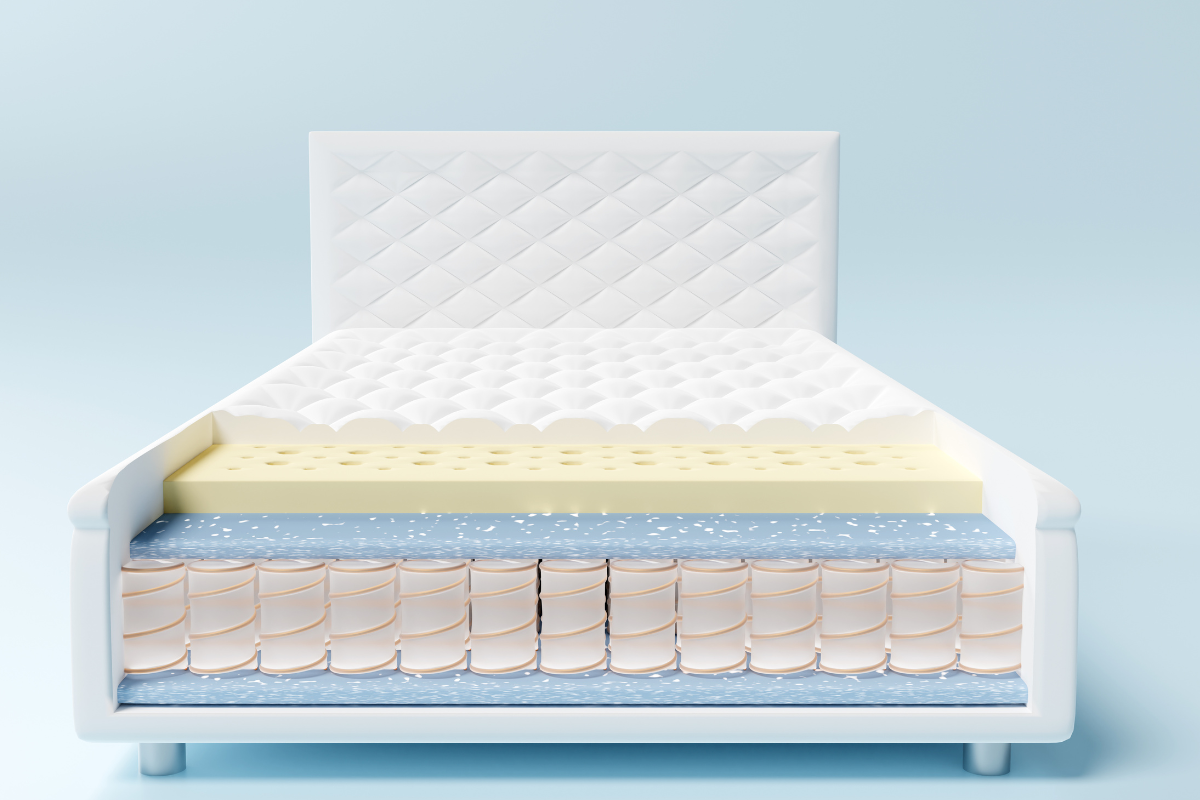
Pros and Cons of Thicker vs. Thinner Mattresses
Thicker mattresses tend to feel plush and luxurious, which is great for those who enjoy sinking into their bed. But not everyone needs that extra softness, especially if you prefer a firmer, simpler feel. Sometimes, a thinner mattress might be all you need for a good night’s sleep.
For heavier sleepers, thicker mattresses are usually a better choice because they offer more support. On the other hand, if you’re lighter, a thinner mattress could provide enough comfort without being too soft. It really depends on your body and sleeping style.
Durability is a key factor when deciding between the two. Thicker mattresses tend to last longer because they’re made with more robust materials. Thinner mattresses, while comfortable, might not hold up as well over time, especially if they’re used frequently or by heavier individuals.
In terms of practicality, thicker mattresses can be challenging to climb into, particularly for shorter people. Thinner mattresses, however, are easier to move around and fit into tighter spaces, which can be a big plus if you’re in a smaller room or plan on moving often.
Popular Queen Mattress Thickness Recommendations
Choosing the right mattress thickness can affect how comfortable it feels. For memory foam mattresses, a thickness of 10-14 inches works well for most people. This size gives a nice mix of softness and support, so you won’t sink in too much.
Hybrid mattresses, which combine foam and coils, are usually around 12-14 inches thick. This provides a good balance of comfort from the foam and support from the coils to help you sleep comfortably without feeling too soft or too hard.
Innerspring mattresses, typically 8-10 inches, provide a firmer feel with simple, responsive support and are often more affordable. Latex mattresses, usually 10-12 inches, offer natural support, durability, and a bouncy feel, which makes them ideal if you prefer a mattress that moves with you.
When it comes to popular queen mattress thickness recommendations, it’s important to also consider how heavy a queen mattress can be. Thicker mattresses, like memory foam or hybrids (12-14 inches), are heavier and harder to move. Understanding both factors will help you make an informed decision.
How to Choose the Perfect Queen Mattress Thickness
Here are some tips that can help you choose the right mattress thickness for your space and needs:
- Measure Your Bed Frame and Foundation: It’s essential to make sure your bed frame can support the height and weight of the mattress you want. A frame that’s too shallow or too low could make the mattress feel unstable.
- Check Room Proportions: A mattress that’s too thick might overwhelm a smaller room. If your space is on the cozier side, a medium thickness could be more in balance with the rest of the room’s furniture.
- Consider Edge Support: Thicker mattresses often have extra edge support, which is helpful if you share the bed. It adds stability and prevents the sides from sagging, which helps if you’re a couple.
- Test Different Options: Don’t skip the in-person testing. Lying on mattresses of varying thicknesses in stores will give you a better sense of what feels most comfortable for your body type and sleeping style.
If you’re considering a king mattress, it’s important to remember how much bigger a king mattress is than a queen. A king is 16 inches wider and the same length as a queen mattress. This size difference can affect how the mattress fits in your room and its overall feel.
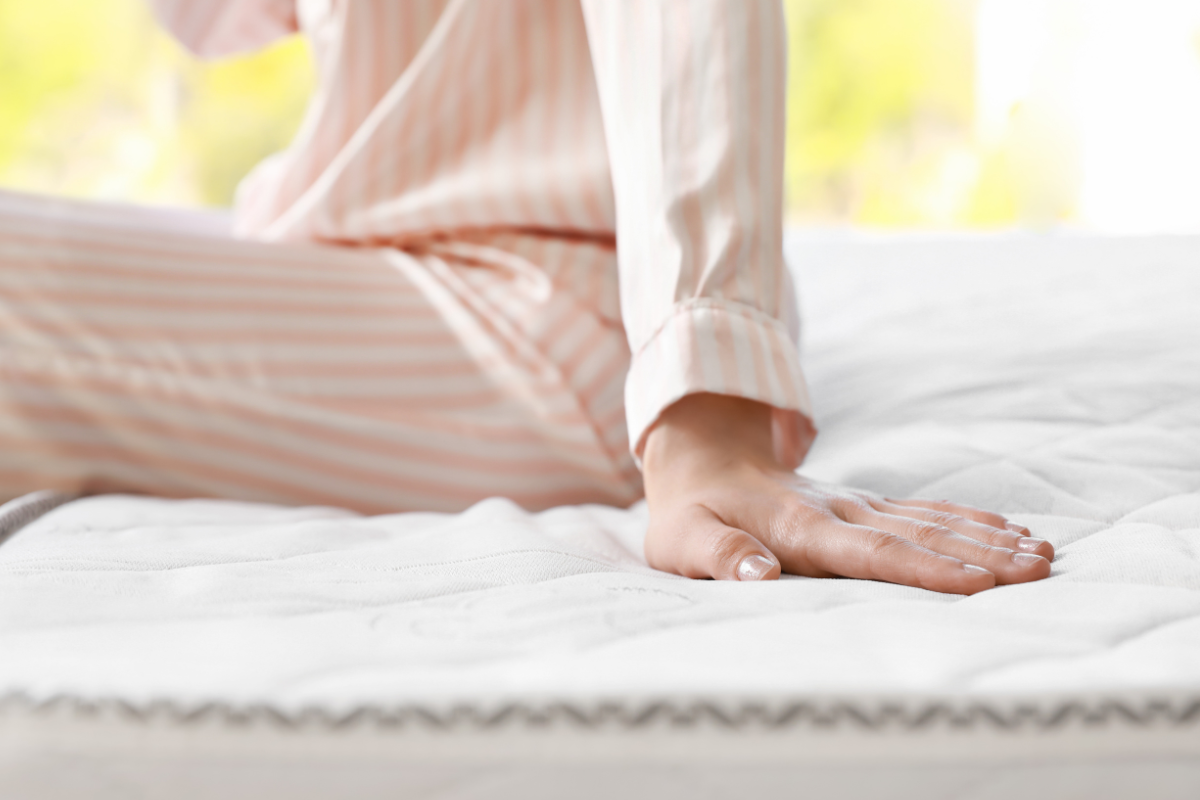
Common Queen Bed Variations
A standard queen mattress (60″ x 80″) is ideal for couples or solo sleepers wanting extra room. It works well with medium-thick mattresses (10-12 inches), balancing comfort and support. This size is versatile and fits most frames.
The Olympic queen mattress, at 66 inches wide, offers extra space compared to a standard queen, which is great for couples who want more room. A thicker mattress (10-14 inches) enhances comfort, particularly for side sleepers or heavier individuals.
Taller sleepers often prefer the California queen (60” x 84”). This extra length is perfect for those who need more legroom. A 10-12 inch mattress ensures proper support across the longer frame to keep comfort without feeling too heavy or stiff.
The split queen mattress is unique, with two separate 30-inch-wide mattresses that allow each person to customize their firmness preferences. It works well with adjustable bed frames and thinner mattresses, ranging from 8-12 inches to ensure both partners get their ideal sleep experience.
The short queen mattress (60″ x 75″) is a compact option, perfect for smaller rooms or RVs. It’s ideal for solo sleepers or couples who don’t mind sacrificing a few extra inches of length, working best with a mattress thickness of 8-12 inches.
Final Thoughts
The thickness of your queen mattress really does matter, as it impacts your sleep quality. It’s not just about how thick it looks, but it’s about how it fits your needs for comfort, support, and longevity. The right mattress thickness helps with everything from pressure relief to maintaining a good sleep posture.
A mattress between 10 and 12 inches tends to work for most people. It provides a solid balance of support and comfort for different sleep positions. But if you find yourself needing extra cushioning or a bit more stability, a thicker mattress (12-14+ inches) could be worth considering.
Keep in mind that your mattress should match not only your comfort preferences but also your bed frame and room setup. It’s important to test out a few options and think about your body type, weight, and usual sleep positions. This way, you’re more likely to find something that helps you sleep well every night.
As you consider your options, you might be wondering, how much is a queen size mattress? While price varies by thickness, material, and brand, a higher investment often means better sleep quality. Finding the right mattress thickness is all about balancing comfort, support, and budget for a restful night’s sleep.

